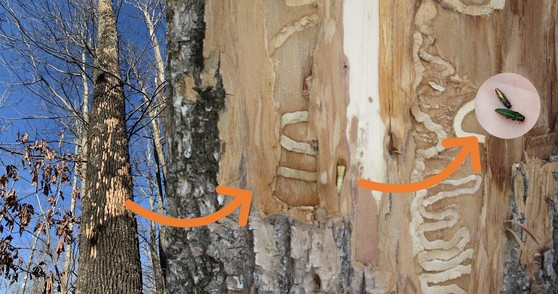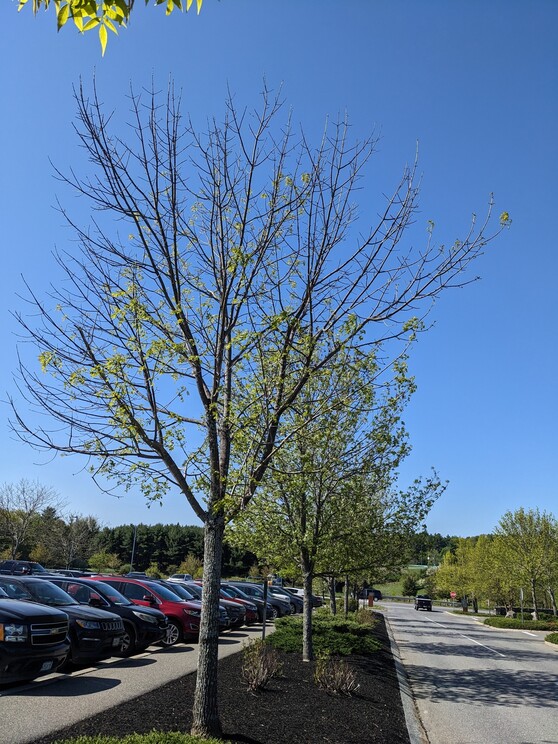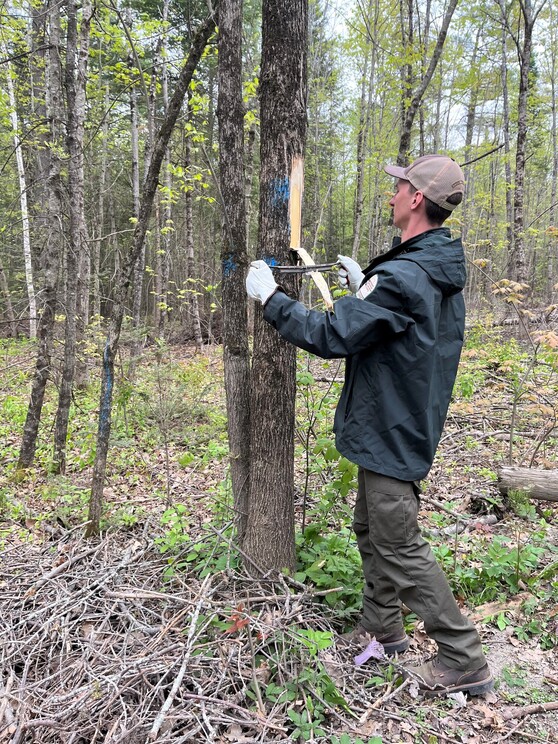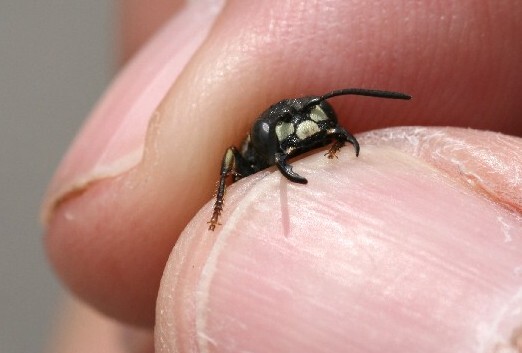Join the Search for Emerald Ash Borer
It's national emerald ash borer awareness week. Learn how you can help in the response to emerald ash borer in Maine.
Five years ago this week, emerald ash borer (EAB) was found in Edmundston, New Brunswick. Soon after, Maine crews found the edges of that infestation along the Saint John River in Madawaska. Now, EAB is known in seven of Maine's sixteen counties.
You can be part of the team that is looking for EAB populations in Maine. Whether becoming informed about what to look for and then looking for the signs of attack as you travel the state, or joining the survey through girdling an ash tree or monitoring a colony of native, buprestid hunting wasps (known as the "beetle bandits"), when you engage in the search, you improve our response to this insect.
 Signs of emerald ash borer attack including bright spots on the stems of ash trees, tunnelling beneath the bark, larvae with bell-shaped segments under the bark, and the brilliant green, slender beetles.
Visit our website, watch a webinar, and attend a workshop. These are three ways to learn the signs of an EAB attack. Once you know the signs and recognize ash trees, you can be part of our detection network. Ash trees are abundant in the places we do business (once you can recognize this tree, you'll be surprised how often they were planted). They line our roadways and rivers and are scattered within our forests. Keep tabs on them, and report signs of attack.
 Typical green ash monoculture in a parking lot. Image: Gary Fish, DACF
If you own or manage land with ash trees in Maine outside of where EAB has already been found, you could become an important part of our detection network. Volunteers participating in our EAB trap tree network have made meaningful contributions to our knowledge of where the insect has landed. We are looking for volunteers to participate in this program now. In particular, we want to know where EAB has spread, so if your property with ash is in an emergency order area (yellow) or unshaded on the map below, read more to see if this is a good fit for you!
 We are looking for trap tree network volunteers in the emergency order area (yellow) and unregulated areas of Maine.
 Entomologist Gabe LeMay establishing a girdled trap tree in Old Town, ME.
If you can't get enough of the wonders of nature, then wasp watching may be your next passion. The "beetle bandit," Cerceris fumipennis, is a native, solitary soil-dwelling wasp. It hunts beetles in the Buprestidae family to provision its nests. When EAB is an area, it is a good detection tool for this pest. If you can spend some time on warm, sunny days in July and August looking for these colonies or monitoring what the wasps are returning with, we can use your help as a wasp watcher. Important note: these wasps are safe to handle.
 The native "beetle bandit" is a solitary wasp used in the hunt for EAB.
Partners throughout the state and region are engaged in emerald ash borer response.
|
